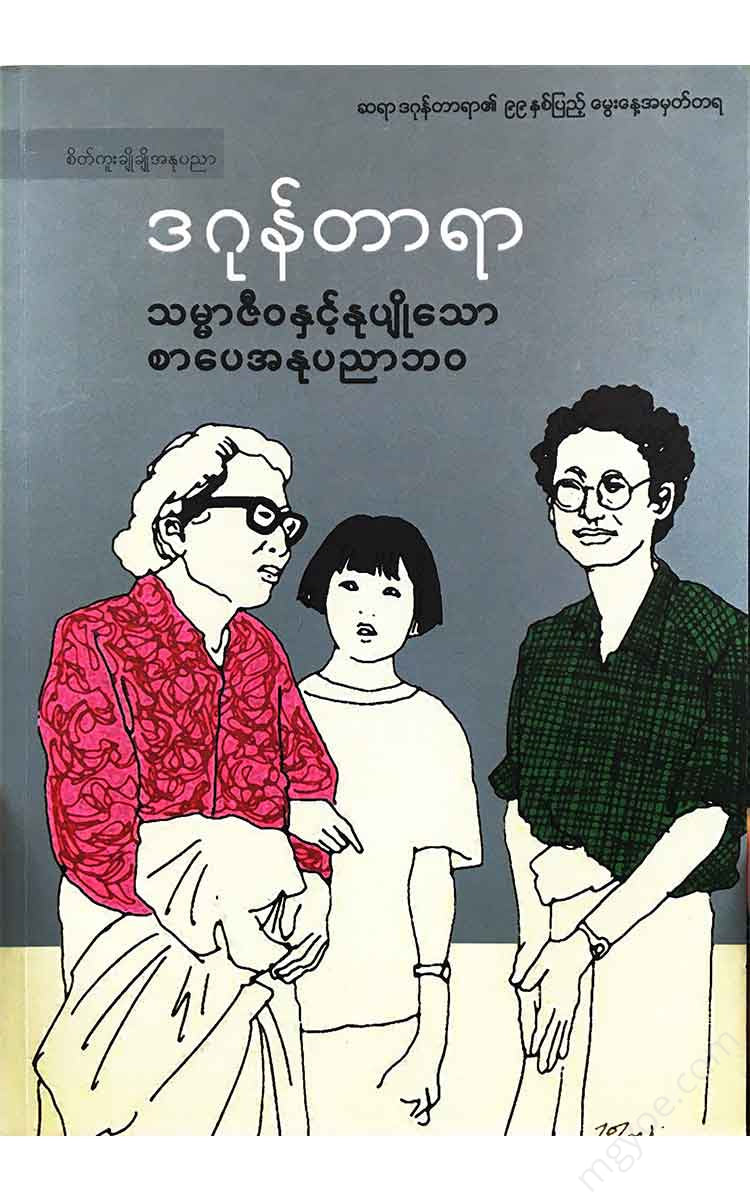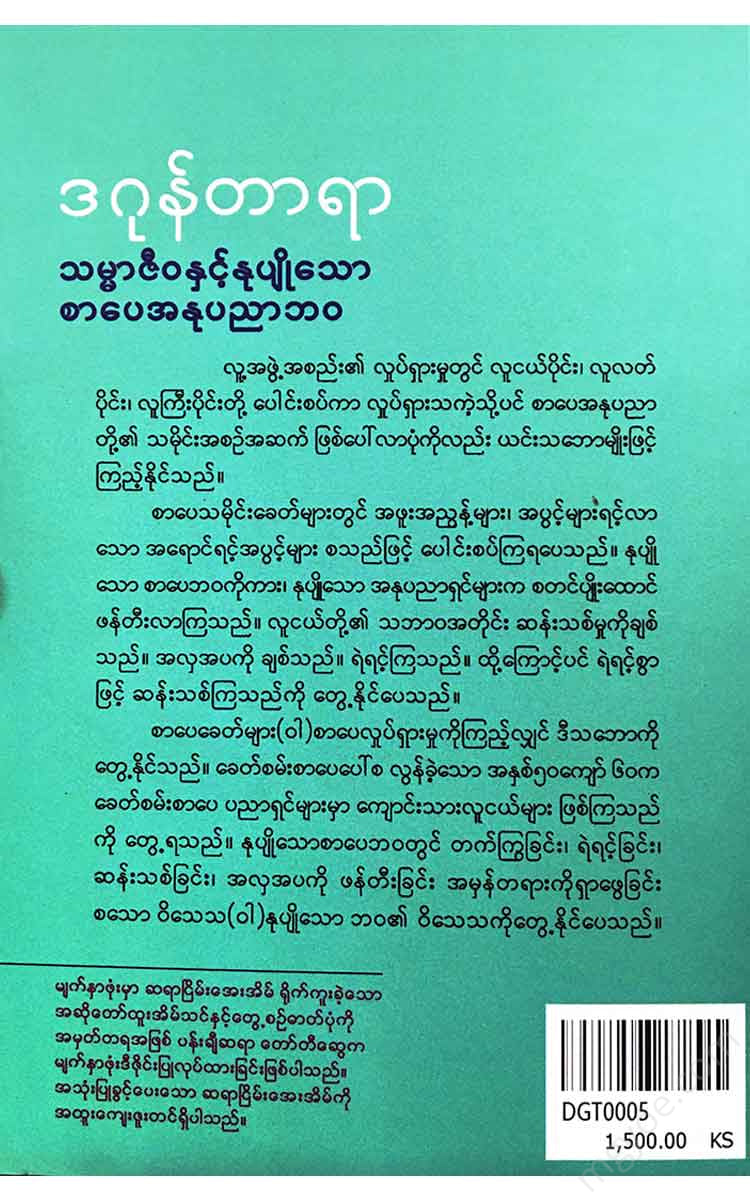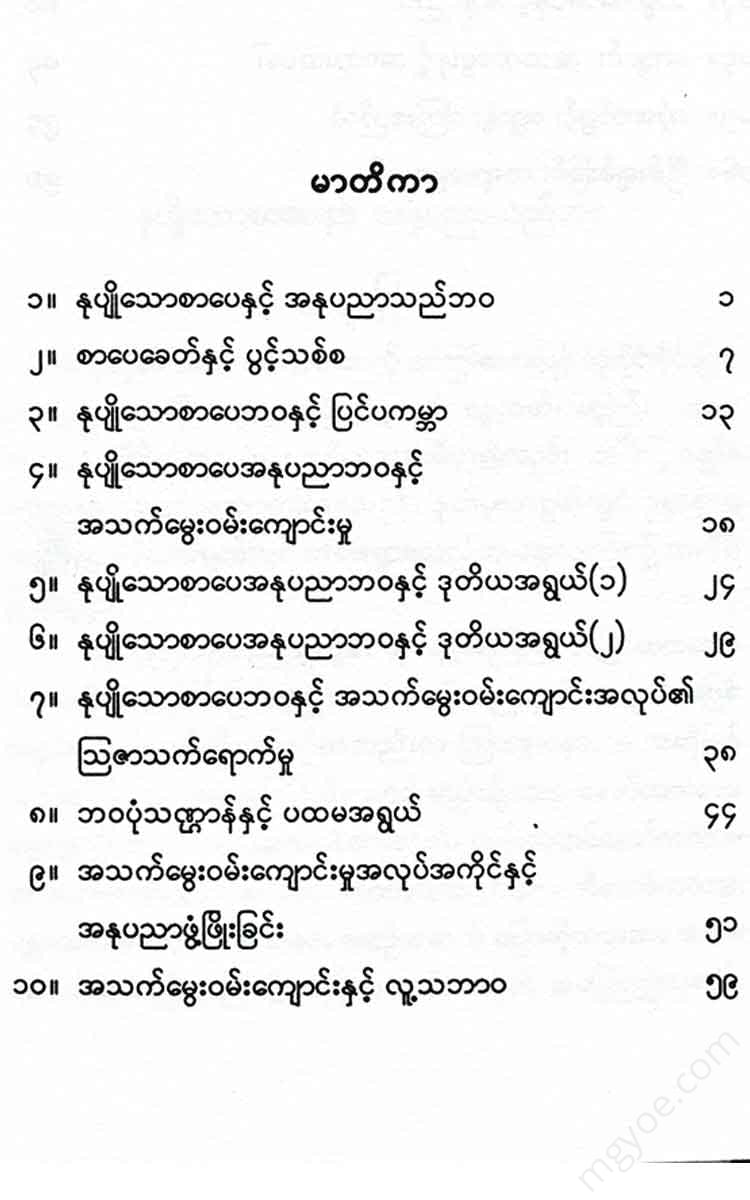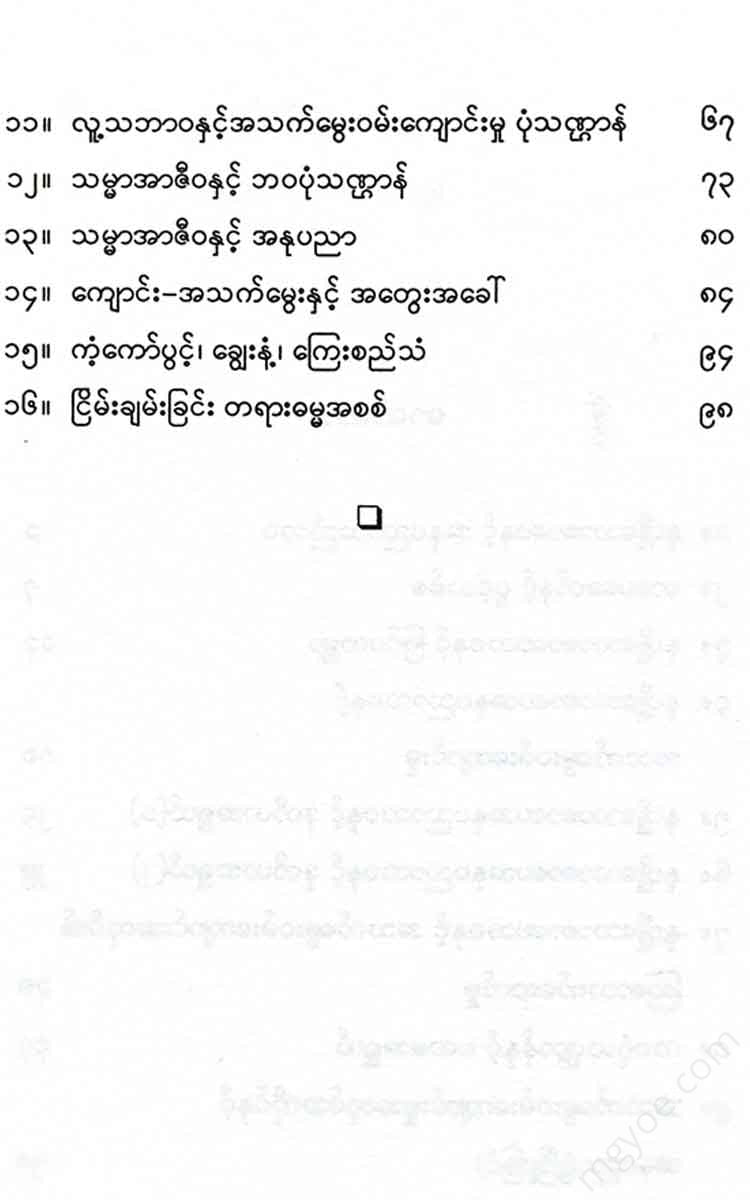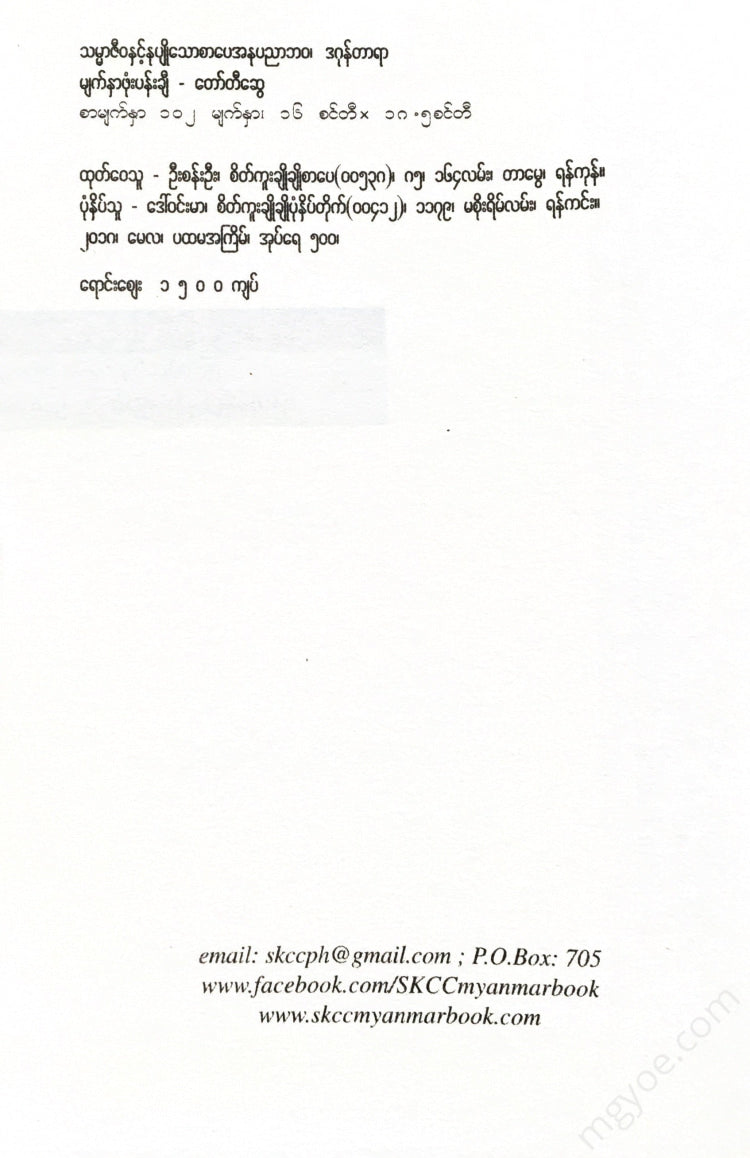စိတ်ကူးချိုချိုစာပေ
Dagon Tara - True Life and a Young Literary and Artistic Life
Dagon Tara - True Life and a Young Literary and Artistic Life
Couldn't load pickup availability
The life span of people is roughly divided into three stages. Youth, middle age, old age, also called first age, second age, and third age. In the first age, people seek knowledge. In the second age, people seek wealth. In the third age, people seek Dharma, as the ancients said.
The ancients expressed their views based on their experiences. This statement is remarkable. It is a statement that we have heard since childhood. However, it is difficult to guess what era the ancients were from. Whether it was the Konbaung era, the Inwa era, the Taungoo era, the Hanthawaddy era, or the Mandalay era. The words that have been spoken over and over again will be meaningless. In any case, based on this statement, we should study the final stages of the ages of youth, middle-aged people, and old people.
In any era, people of different ages, including youth, middle-aged people, and old people, live together.
This society, which includes young people, middle-aged people, and old people, is involved in their contemporary activities. Youth is the period of youth and the beginning of youth. Middle-aged people are the period of adulthood after youth and the beginning of adulthood. Adulthood is the period of adulthood beyond these two periods and the beginning of old age. Society is also a society that combines young people, middle-aged people, and old people.
In this combination, the youth also acts according to the nature and characteristics of the youth, the middle-aged people also act according to the nature and characteristics of the middle-aged people, and the elderly also act according to the nature and characteristics of the elderly. What are the natural characteristics of the youth, the middle-aged people, and the elderly? The youth is young and active. Honest. Wants to innovate. Loves beauty. Cherishes peace. Brave. Loves truth and justice. Dislikes injustice. These are the characteristics of the youth.
The middle-aged person has gradually grown up from his youth and has the characteristics of a young person. When he reaches middle age, these characteristics are strengthened. The better the middle-aged person is nurtured in his youth, the brighter his quality will be. The elderly have gone through a series of historical events and have rich experiences. They gain experience and knowledge based on experience. Time is of the essence. This is the value. However, they cannot be as active and energetic as they are in their youth and middle age.
However, their experience must be passed on to the young and middle-aged. Giving the young and middle-aged a good historical legacy is an invaluable value for the elders. Without these values, the elders will not be able to help or support history at all.
Only through the good cultivation of the young and middle-aged, can adults reach a level where they can follow the example of the young and middle-aged. These are the good characteristics of the young, middle-aged, and elderly. Only when these good characteristics are combined and integrated into the activities of society can society develop well and thrive. We can become a peaceful and prosperous society.
The age range between young, middle-aged, and old may differ slightly from one another.
Youth can be considered up to the age of 40, middle age from 40 to 60, and old age from over 60 to over 70.
The first age that the ancients defined was around 30 years old. It is said to be the age of seeking knowledge, and this age is the age of seeking knowledge. It is estimated to be in the 20s or 30s.
In this kind of combination of young people, middle-aged people, and old people, there needs to be mutual understanding. Young people are active in innovation. They are brave. Older people, on the other hand, tend to overestimate their own experiences. Then, they tend to think based on their current lives.
They are often unaware of the surrounding era, or they turn a blind eye, and reject new things. They tend to cling to old traditions. This ideology is also called conservative ideology. It is the ideology of preserving tradition, conservatism.
They tend to reject the freedom and innovation of young people.
If you look at the history of the Burmese people's struggle for independence, you will see that young people can be the pioneers of the historical era. For example, look at General Aung San. Aung San, while he was a university student, became the editor of Owai Magazine at the age of 20. Owai Magazine was a literary magazine that represented the progressive literature and thought of that era. At the age of 23, he became the general secretary of the Great Burma Association. Then, at the same time, he became the general secretary of the Burmese Liberation Front, which fought for independence and opposed British colonialism.
Then his political activities can be said to have expanded. The Burmese Liberation Front was a group of soldiers. The group included middle-aged and elderly people. It could be said that it was a combination of young and middle-aged people. Then, at the age of 25, he ventured to Japan and formed the Thirty Comrades. At the age of 27, he became the commander-in-chief of the Burmese army.
After the war, at the age of 30, he became the chairman of the Front for the Liberation War, the National Liberation Front. Looking at this, we can see that the youth pioneered the historical era by looking at the historical image of U Aung San.
Today, we can see that U Aung San is a symbol of the sacrifices made by the youth.
In the same way that people's lives are divided into youth, middle age, and old age, or first age, second age, and third age, we can also divide literary life and artistic life. In the historical era of literature, we should define and examine literature that is young, literature that has blossomed from youth, and literature that has matured from youth. Just as the youth, middle age, and old age are combined in the movement of society, the historical development of literature and art can also be viewed in this way.
In the historical era of literature, buds, flowers, and flowers with mature colors are combined. The youthful literary life, however, was started by young artists. The nature of youth is to love innovation. They love beauty. They are bold. That is why they are bold and innovative.
If you look at the literary eras (or literary movements), you can see this. In the early 50s and 60s, the scholars of modern literature were young students. In the youthful literary life, one can see the characteristics of youthful life, such as being active, bold, innovative, creating beauty, and searching for truth.
Kalya Magazine No. 54.
August 1989.
